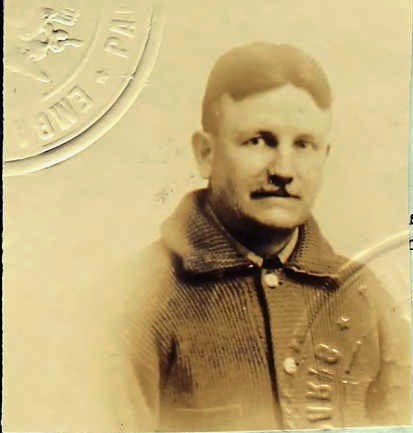"Nominated for the 2015 Mountbatten Award by the Maritime Foundation of Britain,
Into the Danger Zone was written to commemorate those who served in, or were affected by World War I."


As the First World War erupted, the transatlantic passenger trade was at its peak and, as the enormity of the conflict grew, many liners were conscripted into military service. In an attempted counter-blockade of England, German U-boats began attacking Allied merchant vessels, sparking international outrage as civilian casualties began to mount in what became known as the First Battle of the Atlantic. Eventually, the declaration of unrestricted submarine warfare in 1917 helped to draw the previously neutral United States into the conflict. By war's end, the U-boats had managed to sink over 5,000 ships, killing 15,000 people in the process.
Into the Danger Zone recounts what it was like for both military personnel and civilians alike to experience a sea voyage during a time of unprecedented war, when they could encounter dangers from U-boats, mines, and enemy surface vessels. Attacks were frequent and tragedy all too common. This engaging oral history, now in a revised and expanded second edition, helps readers to experience this little explored chapter of the twentieth century through the use of a large quantity of unpublished or rare first-hand accounts, illustrations, and photographs.

Into the Danger Zone was written to commemorate those who served in, or were affected by World War I. With over a century having passed since the war ended, it is important to remember those who fought and died in the conflict. The book contains a large quantity of rarely seen and previously unpublished first-hand accounts, and a large quantity of rare and dramatic photographs. Much of the information in the book has not been published previously. The basis of the book is the engaging first-hand accounts, which place the reader right in the experience. After all, history is best told by those who experienced it.
War buffs, those who enjoy oral histories, as well as those who are interested in maritime history and ocean liners will all find the book equally engaging. The stories of famous sinkings such as the Lusitania and Britannic are detailed, as are the crossings and sinkings of lesser known vessels, along with accounts from the crewmembers of the attacking U-boats. Those interested in the Titanic will also find the book of interest, since there are many surprising connections with that vessel, from survivors whose World War I stories are told, to information about the ship’s sister ships Olympic and Britannic, and vessels intimately connected with Titanic, such as Californian and Carpathia. Their stories, and those of much less famous people and ships, are all contained in the book.

The book is only available online through Blurb, and is available at the following link: https://www.blurb.com/b/10958089-into-the-danger-zone.

The coauthors have been releasing outtakes and information and photographs that did not make the final cut for the book on the book’s official Facebook page. The material posted on the page gives one an idea of what will be contained in the book, and is frequently updated:
https://www.facebook.com/intothedangerzoneThe account of Sherwood Eddy, from April 1916:
"At Aden we found a battle in progress outside the city. As we came through the Suez Canal it was lined with British troops, where they are concentrating nearly half a million men to meet the proposed attack from the German and Turkish forces. At Port Said we took on a big gun for defense, astern. The gunner was one of forty-three survivors from the torpedoed Hawk. The man opposite me at the table had, during the year, been in two ships that were torpedoed and in one wreck. As the submarines had just sunk our sister ship, the Persia, in seven minutes without warning, by the captain’s order we had to have life preservers ready night and day. We left the usual course, skirting the coast of Africa and zigzagged every day to escape the submarines. By night we steamed full speed ahead in the absolute darkness with no light showing, running the risk of collision, in order to escape the submarines. . . . I sailed from England on the Philadelphia, as a neutral American vessel, in order to save my family from anxiety. The first night we ran into a sailing vessel, and sank her, losing half our boats, our mast and one propeller. Strangely enough this collision occurred at the point where I was shipwrecked at Holyhead twenty years ago when the Cunard Cephalonia went down. We then put back to Liverpool and I started again on the White Star Adriatic, skirting the coast of Ireland. We had a convoy, but received a wireless communication that a submarine was in our neighborhood. The surface of the water was covered with oil which they had thrown out to dim the periscope of the submarine. Next morning we learned that they had caught the submarine instead of her catching us. After ten days of storm and head-winds, we finally landed safe and well in New York.”

Excerpt from the account of Reverend Joseph Wareing, describing his experience traveling in a convoy in June 1918:
"Soon after we reached the danger zone our convoy was attacked by German submarines … at least two were seen. We had a lively escort of British destroyers, however, and they were on the trail of the periscopes like a flash. Guns and depth charges began popping like giant firecrackers on the Fourth of July. Fifteen depth charges were dropped into the nest of German submarines. Whether any submarines were sunk I cannot say … but I know we did not lose a single ship. Our convoy carried a large number of American troops – I cannot tell you how many…”

 |
 |
 |
 |
 |
 |